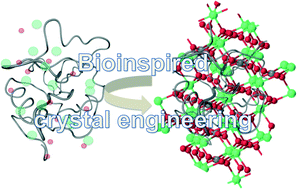Intracrystalline inclusions within single crystalline hosts: from biomineralization to bio-inspired crystal growth
Abstract
Many crystals in nature exhibit fascinating mechanical, optical, magnetic and other characteristics. One of the reasons for this phenomenon has to do with the presence of specific organic molecules that are tightly associated with the mineral. Over the years, some organic crystals have been found to be located within the lattices of their single-crystalline biogenic hosts. A number of questions remain unanswered: for example, how do these molecules become incorporated and what is their function? In this review we survey the gradual refinement of the above mentioned finding in biogenic crystals, with the objective of tracing the acquisition of our fundamental knowledge in this field during the last 50 years. We highlight the progress made in understanding the function and significance of this intracrystalline organic matter, from the earliest observations of this phenomenon in a biological system to the highly promising recent achievements in bio-inspired material synthesis, where intracrystalline molecules have been used in many studies to synthesize numerous synthetic nanohybrid composites with fascinating new properties.

- This article is part of the themed collection: A celebration of 25 volumes of CrystEngComm

 Please wait while we load your content...
Please wait while we load your content...